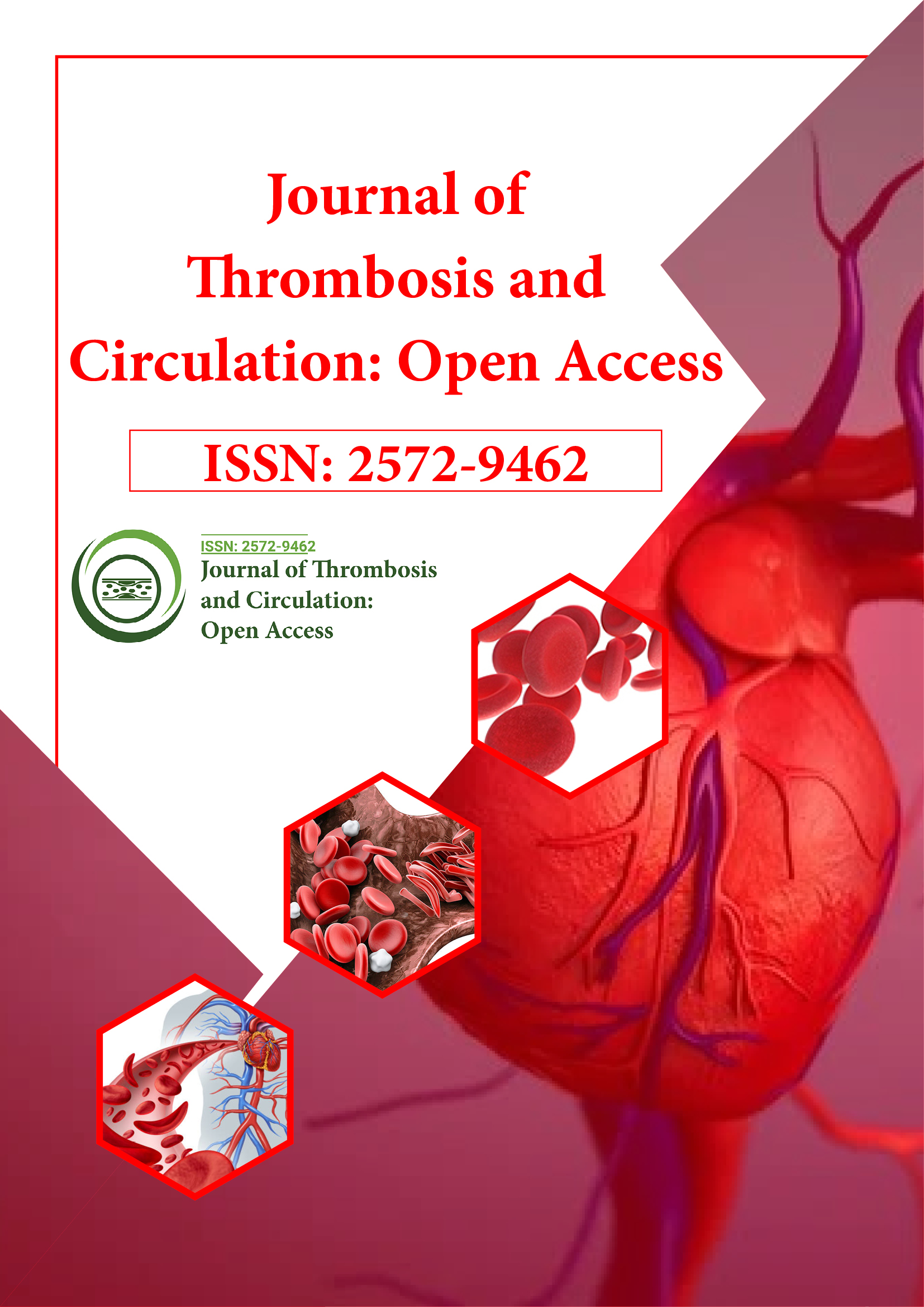Indexed In
- RefSeek
- Hamdard University
- EBSCO A-Z
- Publons
- Google Scholar
Useful Links
Share This Page
Journal Flyer

Open Access Journals
- Agri and Aquaculture
- Biochemistry
- Bioinformatics & Systems Biology
- Business & Management
- Chemistry
- Clinical Sciences
- Engineering
- Food & Nutrition
- General Science
- Genetics & Molecular Biology
- Immunology & Microbiology
- Medical Sciences
- Neuroscience & Psychology
- Nursing & Health Care
- Pharmaceutical Sciences
Commentary - (2025) Volume 11, Issue 1
Insights into Blood Coagulation Mechanisms and Clinical Implications in Hemostatic Dynamics
Robert Andrews*Received: 21-Mar-2024, Manuscript No. JTCOA-24-25198; Editor assigned: 23-Mar-2024, Pre QC No. JTCOA-24-25198 (PQ); Reviewed: 07-Apr-2024, QC No. JTCOA-24-25198; Revised: 24-Feb-2025, Manuscript No. JTCOA-24-25198 (R); Published: 03-Mar-2025, DOI: 10.4172/2572-9462.25.11.291
Description
Blood clotting, also known as coagulation is a crucial physiological process that prevents excessive bleeding upon injury while maintaining the integrity of the circulatory system. This intricate process involves a series of events orchestrated by various cellular and molecular components within the blood and blood vessel walls. Understanding the mechanisms of blood clotting is essential not only for managing bleeding disorders but also for preventing thrombotic complications that can lead to serious health implications.
Mechanisms of blood clotting: Blood clotting is initiated by vascular injury, which exposes the underlying tissue to blood components. This triggers a cascade of events involving platelets, coagulation factors, and endothelial cells. The process can be broadly divided into three main stages: Primary hemostasis, secondary hemostasis, and fibrinolysis.
• Primary hemostasis: Upon vascular injury, platelets adhere to exposed collagen fibers at the site of injury, facilitated by von Willebrand Factor (vWF). This adhesion leads to platelet activation and aggregation, forming a temporary platelet plug to seal the damaged vessel.
• Secondary hemostasis: Simultaneously, the coagulation cascade is initiated. This cascade involves a series of enzymatic reactions that culminate in the conversion of pro-thrombin to thrombin, a key enzyme in blood clot formation. Thrombin then converts fibrinogen into fibrin strands, which reinforce the platelet plug, forming a stable blood clot.
• Fibrinolysis: Once the injury is repaired, the clotting process needs to be regulated to prevent excessive clot formation. Fibrinolysis involves the dissolution of the clot by the enzyme plasmin, which cleaves fibrin strands, leading to clot breakdown and restoration of blood flow.
Implications of blood clotting disorders: Disruption of the delicate balance between clot formation and dissolution can result in bleeding disorders or thrombotic complications.
• Bleeding disorders: Deficiencies in platelet function or coagulation factors can lead to bleeding disorders such as hemophilia or von Wille-brand disease. These conditions are characterized by prolonged bleeding times and increased risk of hemorrhage, even with minor injuries.
• Thrombotic complications: Conversely, abnormalities in blood clotting can predispose individuals to thrombotic events such as Deep Vein Thrombosis (DVT), Pulmonary Embolism (PE), or arterial thrombosis. These conditions pose a significant risk of morbidity and mortality, particularly if not promptly diagnosed and treated.
Therapeutic interventions: The management of blood clotting disorders involves a multifaceted approach aimed at restoring hemostasis or preventing thrombosis, depending on the underlying condition.
• Anticoagulant therapy: Anticoagulants such as heparin, warfarin, and Direct Oral Anticoagulants (DOACs) are commonly used to prevent and treat thrombotic disorders by inhibiting the coagulation cascade or interfering with platelet function.
• Antiplatelet agents: Drugs like aspirin, clopidogrel, and ticagrelor inhibit platelet aggregation and are used to prevent arterial thrombosis in conditions such as coronary artery disease or stroke.
• Clotting factor replacement: Individuals with bleeding disorders may require clotting factor replacement therapy to replenish deficient factors and restore hemostasis.
Conclusion
Blood clotting is a finely regulated process vital for maintaining vascular integrity and preventing excessive bleeding or thrombosis. Understanding the mechanisms of blood clotting and its implications for health and disease is crucial for developing effective therapeutic interventions to manage bleeding disorders and prevent thrombotic complications. Continued research in this field promises to further enhance our ability to diagnose, treat, and prevent blood clotting disorders, improving patient outcomes and quality of life.
Citation: Andrews R (2025) Insights into Blood Coagulation Mechanisms and Clinical Implications in Hemostatic Dynamics. J Thrombo Cir. 11:291.
Copyright: © 2025 Andrews R This is an open-access article distributed under the terms of the Creative Commons Attribution License, which permits unrestricted use, distribution and reproduction in any medium, provided the original author and source are credited.
